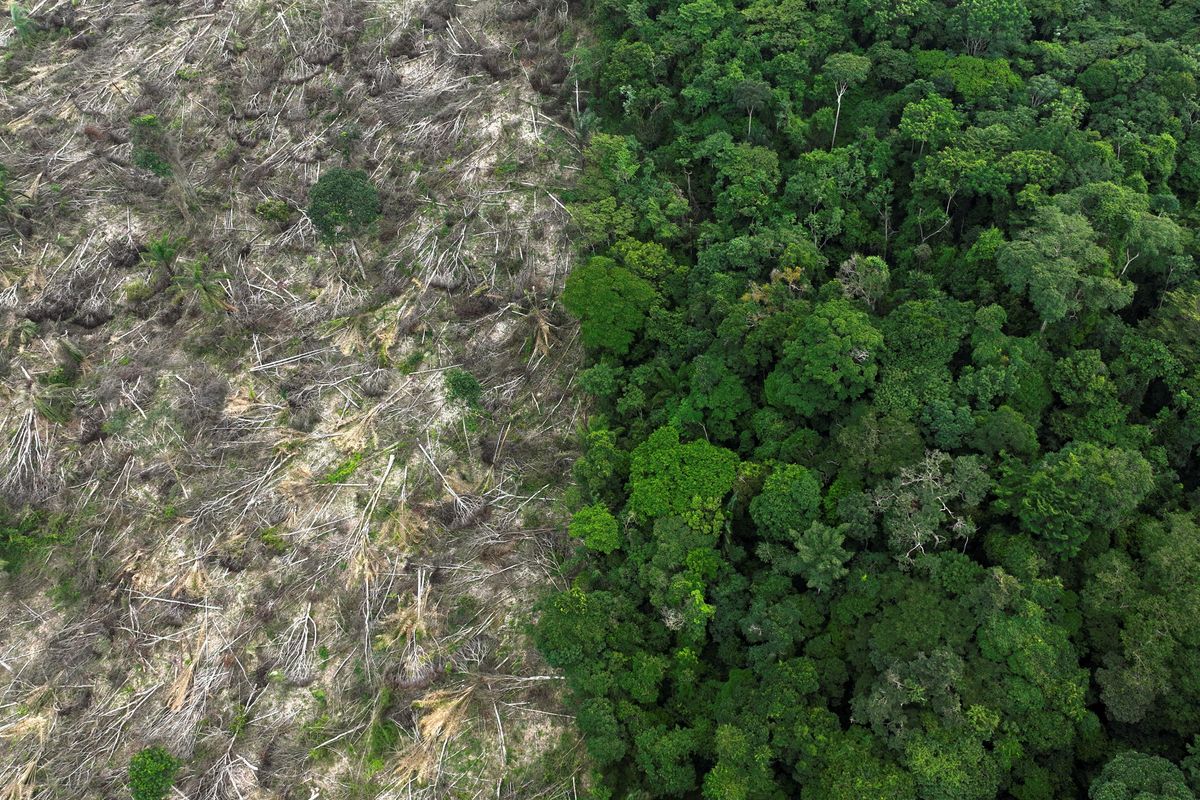Deforestation rose in 2022, even with all those COP26 pledges to halt and reverse forest loss
Deforestation is a major environmental problem worldwide and is seen as contributing to climate change.

A few minutes every morning is all you need.
Stay up to date on the world's Headlines and Human Stories. It's fun, it's factual, it's fluff-free.
The backstory: Deforestation is a major environmental problem worldwide and is seen as contributing to climate change. Old-growth tropical forests are really important when it comes to climate stability and maintaining biodiversity. They’re great for collecting carbon from the atmosphere, which is super important as we face more and more concerns with carbon emissions. But, development, logging, agricultural expansion and climate change have led to massive deforestation over the years. In 2014, world leaders made a pact to curb deforestation called the New York Declaration on Forests, but that plan ended up falling way short of its goals, according to a progress report in 2021.
More recently: At the COP26 climate conference in 2021, world leaders made political pledges to cut deforestation rates. Over 100 of them, with their countries containing about 85% of the world’s forests, signed the Glasgow Declaration on forests, committing to "halt and reverse forest loss and land degradation by 2030" by working together. Brazil’s president at the time, Jair Bolsonaro, had also signed the agreement, even though his administration was known for allowing more development in the Amazon rainforest.
The development: According to a new report from Global Forest Watch, in 2022, tree loss continued to rise, especially in tropical forests. We lost an area of tropical forest the size of Switzerland in total. Brazil was the biggest source of this deforestation. These losses show that promises made at COP26 just aren’t being kept on a large scale. Tropical deforestation actually jumped 10% from 2021 when it comes to primary forests.
Is there any chance we can turn this around? Well, this report actually shows that there’s been a clear cutback to deforestation rates in Indonesia, showing that there definitely are ways to bring down our deforestation rates. And, later this year, Brazil’s current president, Luiz Inácio Lula da Silva, is holding a pan-Amazon summit where the issue will be taken up.
Key comments:
“Forest protection and forest restoration is about so much more than a carbon price,” said Inger Andersen, the UN’s environment chief. “It is about protecting biodiversity; protecting the livelihoods of Indigenous people and local communities and sustaining the hydrological cycle to stabilize weather patterns and protect ourselves against landslides, soil erosion and flooding. We simply cannot afford to lose more forest cover.”
“We had hoped by now to see a signal in the data that we were turning the corner on forest loss,” said Frances Seymour, a senior fellow at the World Research Institute’s forest program. “We don’t see that signal yet, and in fact, we’re headed in the wrong direction.”




Comments ()